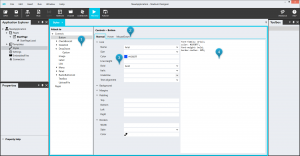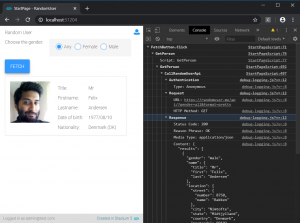The latest version of Stadium is out. This release contains some nifty new features that will make building your next great web application even easier.
The new features are;
Styles
Stadium provides you with default styles for your generated applications. At times however, you might want to change the default look of your application to reflect the colours of your business or change the style to better accommodate your design. The new Style tab now allows you, whether a beginner or expert CSS user, to easily override the default styles and customize the application to your exact styling requirement.

The Style editor consists of 4 parts:
- the selector
- the pseudo classes
- basic CSS properties
- Free-text CSS area
The selector determines what element(s) the style will be applied to in the generated application. It is divided into two categories, Controls and Pages. Any style you change under the Controls section will be applied to all controls of the same type across your entire application. Styles under Pages will only be applied to that one specific control.
The pseudo classes (section 2) allows you to define different styles for the different states a control can be in, e.g you can create a different style for each one of the states a hyperlink can be in: ‘Normal’, ‘Visited’, ‘Hover’ or ‘MouseDown’.
Section (3) allows you to easily change the basic styling by simply setting the appropriate properties. As a property changes, the section marked as (4) updates to reflect the CSS that will be applied.
The free-text CSS area is where the advanced CSS user can make the real magic happen by adding any advanced CSS declarations that he wishes to.
Preview Logging
In the previous release we introduced Preview Logs which expose detailed runtime information of the actions. Database and web service calls are now also being logged to the preview logs. This enables you to debug and correct any possible issues that might occur while making such calls.
For database calls, the information logged differs for the type of query being executed. Below is the info logged for a standard SELECT query:
- Connection String
- Command Type
- Nr of rows returned in the result
For Web Service calls, the following info is logged:
- Authentication details
- Type
- Username (for Auth Type ‘Basic’)
- Password (for Auth Type ‘Basic’)
- Request details
- URL
- HTTP Method
- Response details
- Status Code
- Reason Phrase
- Media Type
- Content
Below you can see an example of the preview logs of a web service call to the Random User API.

